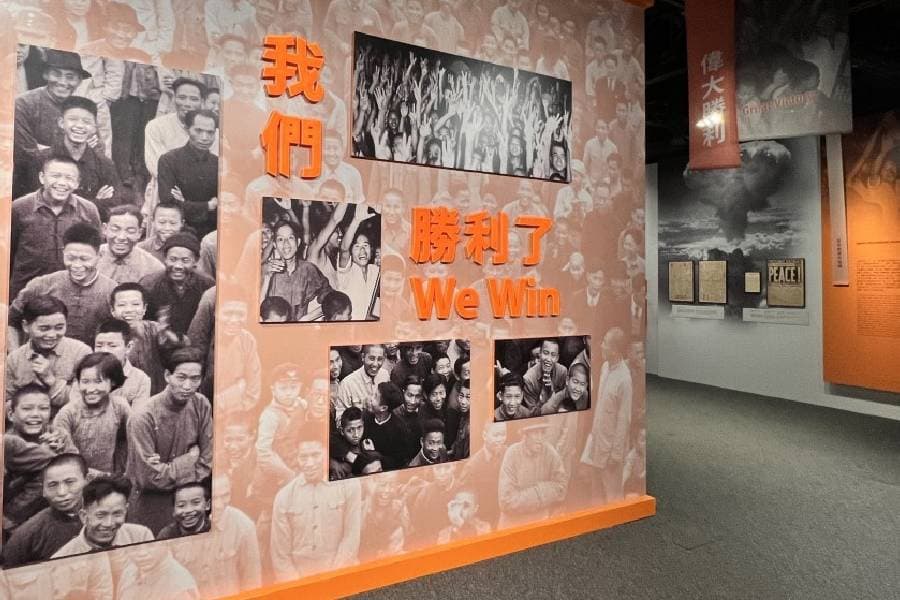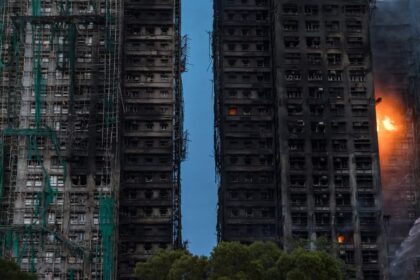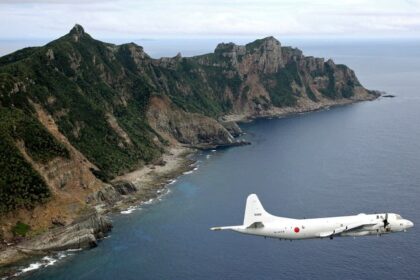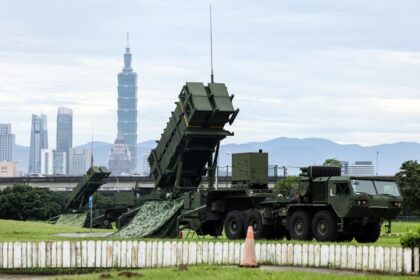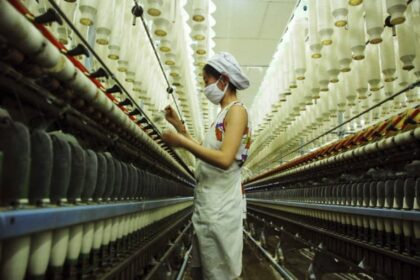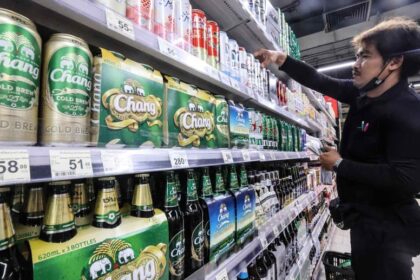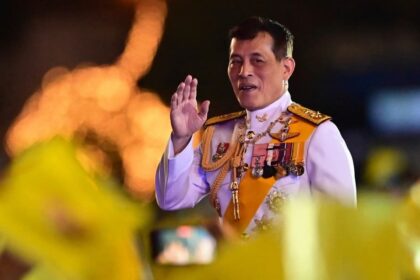Why this exhibition matters now
Hong Kong placed remembrance at the center of diplomacy this week as a special delegation of foreign envoys and business chamber representatives toured a World War II exhibition focused on the Chinese War of Resistance against Japan. The visit, held at the Hong Kong Museum of History, marked one of the city’s most visible international commemorations during the 80th anniversary year of victory in 1945. Organizers said more than 20 consuls general, consuls and representatives from foreign chambers joined the program, which spotlighted the theme of honoring history and safeguarding peace.
- Why this exhibition matters now
- What visitors saw inside the galleries
- A diplomatic moment shaped by history
- Russia highlights shared wartime history
- What WWII meant for Hong Kong
- Why envoys and business leaders were invited
- How the exhibits placed China’s war within the wider Allied effort
- Scholars weigh lessons for peace
- Education and preservation for the next generation
- Key Points
The exhibition, titled “United in Arms, Standing for Peace: 80th Anniversary of Chinese Victory in the War of Resistance,” brings together a curated selection of artifacts and photographs that trace the long and brutal conflict across China and its impact on the region. The curators emphasized remembrance without hostility, an approach that resonated with the diplomatic audience. The participation of envoys sent a message that the lessons of the past still guide the search for stability today.
Hong Kong was not a distant spectator to that history. The city was attacked in December 1941 after a short but intense battle. A long occupation followed, bringing hardship to civilians and a lasting imprint on local memory. In the decades since, Hong Kong’s museums, schools and community groups have helped preserve the record of those years through collections, oral histories and regular commemorative events each September.
The latest exhibition sits within a wider calendar of remembrance in 2025 across the city. Cultural institutions and consulates have arranged talks, photo displays and wreath-laying ceremonies to mark milestones connected with the end of the war in Asia. The presence of diplomats at the museum underscored how remembrance can also be an act of public diplomacy, a chance to encourage dialogue across borders through a shared historical lens.
What visitors saw inside the galleries
According to curators, the showcase presented 60 exhibits being shown in Hong Kong for the first time. Visitors encountered wartime photographs, documents, letters and personal effects that brought individual faces and stories into view. The selections highlighted the scale of sacrifice across China’s cities and countryside, and they placed Hong Kong’s experience within a wider timeline stretching from the late 1930s through the war’s end in 1945.
Displays explained how China’s resistance front linked with Allied efforts elsewhere, including the final campaigns that collapsed the Japanese military position in Northeast Asia. Panels also traced the way communities rebuilt after the conflict. For many visitors, the material created a connection between the statistics of war and the everyday lives that were disrupted and, in many cases, lost.
A diplomatic moment shaped by history
The special tour was arranged by the Office of the Commissioner of the Ministry of Foreign Affairs in the Hong Kong Special Administrative Region. In opening remarks to the visiting envoys, Li Yongsheng, the office’s deputy commissioner, stressed that remembering the war is intended to unite rather than divide.
Li described the event as a call to learn from the past and to center peace as a guiding value, especially at a moment when global tensions can feel close to the surface.
Li Yongsheng said: “The commemoration of history is not the advocacy of hatred. It represents a wish to learn from the past, to cherish peace and to create a better future.”
He also linked the work of remembrance to present challenges facing international relations, describing a world that is changing quickly and facing test after test. His comments echoed a recurring theme in official speeches this year, which frame historical commemoration as a way to strengthen dialogue.
Li added: “The world has entered a new period of governance and transformation. Global governance has come to a new crossroads faced with a fluid international situation and various risks and challenges.”
For diplomats in attendance, the museum setting created an opportunity to discuss education, culture and people-to-people ties away from the daily grind of policy debates. The visible participation of foreign chambers of commerce also pointed to the role of business communities in supporting cultural programming, museum partnerships and student outreach that keep this history present for younger generations.
Russia highlights shared wartime history
Alongside the museum tour, a separate photo exhibition at Hong Kong Central Library has added another dimension to this year’s commemorations. Hosted by the Russian Consulate General, the display features more than 30 historical images and archival documents on China and the Soviet Union during World War II, many shown to the Hong Kong public for the first time. The exhibit marks the 80th anniversary of the campaigns that helped liberate Northeast China in the final weeks of the war.
Russia’s Consul General in Hong Kong, Anatoly Kargapolov, described the library exhibition as a tribute to shared sacrifice and a practical step to safeguard local wartime heritage. He noted recent efforts to research and restore graves in Hong Kong belonging to Russian seamen killed during Japanese air attacks, an initiative that has included volunteer historians as well as support from local authorities.
Anatoly Kargapolov said: “We deeply appreciate the respect and care shown by the Chinese people in keeping this memory alive here in Hong Kong. The Russian consulate general is also working to preserve our shared second world war heritage.”
The consulate and community groups have also marked Victory Day with public remembrance, including laying wreaths at the Hong Kong Cemetery for Soviet seamen who died in the city during the war. These observances and exhibitions have widened public awareness of the way wartime stories cross borders, with Hong Kong serving as a place where multiple strands of memory meet.
What WWII meant for Hong Kong
The Battle of Hong Kong began on December 8, 1941, hours after the attack on Pearl Harbor because of the international date line. Allied forces, including British, Canadian, Indian and local units, held out for 18 days. On December 25, the governor surrendered in what locals came to call Black Christmas. The occupation lasted for more than three years. Food shortages, arrests and forced labor scarred the city. Many residents fled or were displaced, and many never returned.
Scholars who study the period often point out that Hong Kong’s wartime experience connected the city to events far beyond its shores. Migration surged before the battle as people sought refuge from fighting on the mainland, then fell steeply during the occupation. Factories and small workshops suffered damage or closure. Neighborhoods changed as families were separated or moved. These shifts shaped the city that emerged after the war, influencing labor markets, housing and local industry for years.
Museum collections in Hong Kong carry this story forward. The Hong Kong Museum of History preserves artifacts that reflect everyday life under occupation, from ration coupons to letters and photographs. The Museum of Coastal Defence, rebuilt and reopened in recent years, presents the battle and its aftermath with models, maps and personal accounts. Classroom programs across the city use these materials to help students connect individual lives with major turning points in regional history.
Why envoys and business leaders were invited
Diplomatic corps in global cities often back cultural events that build bridges across communities. Bringing envoys and chamber of commerce leaders into a wartime museum during an anniversary year added a wider civic audience to the work of curators and historians. It signaled that remembrance is a public responsibility that crosses professional lines, not just the domain of military historians or veterans groups.
At the tour, the focus stayed on the human cost of war and the idea that education can help prevent new conflicts. Business chambers, which sponsor scholarships and support community programs, were present because their networks can help museums reach new audiences, including young people and recent arrivals who may not know this history. The choice to center the program on a theme of peace steered the event away from recrimination and toward shared values that can be carried into classrooms, town halls and boardrooms.
How the exhibits placed China’s war within the wider Allied effort
The galleries traced China’s eight year war of resistance beginning in 1937, then linked that struggle to the closing campaigns that forced Japan’s surrender in 1945. Exhibits explained how military actions in the final weeks in Northeast China shifted the balance in the Pacific, and how events inside China affected outcomes across Southeast and East Asia. The curation showed a web of coordination among Allies with very different political systems who still found common cause against a global threat.
Presentations like this widen the public understanding of the war beyond Europe. They reinforce that Asia was a central theater with front lines stretching from China to Burma and beyond. Visitors who grew up studying the European campaigns often encounter a different perspective inside these galleries. They see how decisions in Chongqing, Moscow, London and Washington intertwined and how those decisions were felt by families in Hong Kong’s streets and hills.
Scholars weigh lessons for peace
Academic voices who have taken part in recent Hong Kong programs argue that studying Asia’s war experience is essential for grasping current affairs. One visiting professor from Hong Kong Baptist University has argued that the region’s wartime story still receives less attention in classrooms and public debates than Europe’s, even though the conflict inflicted vast destruction and loss of life across Asia. That view helps explain the growing interest in archives, oral history projects and exhibitions that bring regional experiences to broader audiences.
Researchers have also highlighted the social and economic aftershocks of the war in Hong Kong. Lecturers who study the city’s wartime demography point to shifts in population, housing pressures and manufacturing capacity as people fled from the mainland before the battle, then departed or returned after 1945. These long term changes influenced everything from school enrollment to labor supply in the early postwar years.
Other scholars, including professors with a focus on modern Chinese history, emphasize the decisive role of final campaigns in Northeast Asia in speeding the end of the conflict. They also note that wartime collaboration among powers with different ideologies offers a case study in how rivals can still cooperate to confront shared threats. Programs in Hong Kong have used that theme to prompt discussions about diplomacy today, not to draw historical equivalence but to encourage dialogue about practical steps that reduce risk.
Education and preservation for the next generation
Museums and consulates in Hong Kong are working to make this history accessible for students and families. Exhibition teams have expanded bilingual labels and added school worksheets that encourage students to analyze photographs, read letters and think about how people endured shortages and danger. Public lectures connect experts with audiences who might not otherwise visit a museum, including new residents who want to understand the city’s story.
Heritage preservation has also gained momentum. The effort to locate and restore graves belonging to wartime dead in Hong Kong is one example of how historical research produces tangible results. Partnerships between consulates, community groups and local authorities have helped secure archives and identify names that were once lost. These projects turn remembrance into action and give younger people a way to participate in keeping memory alive.
Key Points
- More than 20 consuls, consuls general and foreign chamber representatives toured a World War II exhibition at the Hong Kong Museum of History.
- The exhibition, United in Arms, Standing for Peace, marks the 80th anniversary year of victory in 1945 and presented 60 items shown in Hong Kong for the first time.
- Li Yongsheng, deputy commissioner at the Office of the Commissioner of the Ministry of Foreign Affairs in Hong Kong, urged remembrance that centers peace, not hatred.
- A related photo exhibition by the Russian Consulate General at Hong Kong Central Library showcased rare images of China and the Soviet Union during the war.
- Research and restoration work continues on graves of Russian seamen killed in wartime attacks on Hong Kong, supported by volunteers and local authorities.
- Scholars highlight that Asia’s wartime experience still receives less attention than Europe’s, despite heavy losses across the region.
- Hong Kong’s museums and schools are using exhibitions, talks and classroom tools to connect younger generations with the city’s wartime history.
- Diplomatic and business participation in commemorations supports cultural programs and broadens public engagement with historical education.


